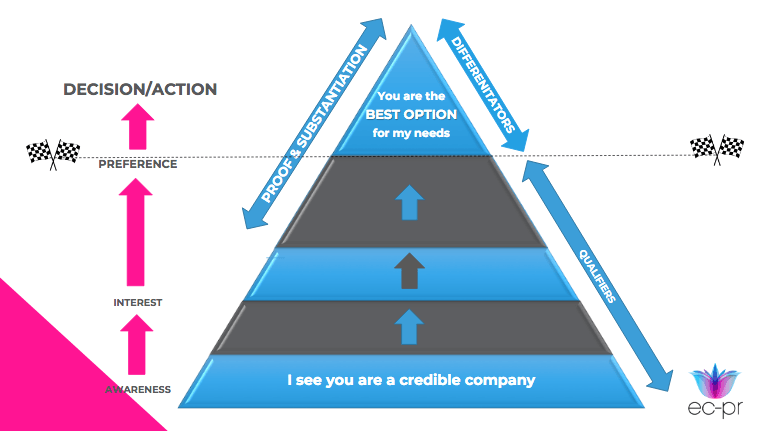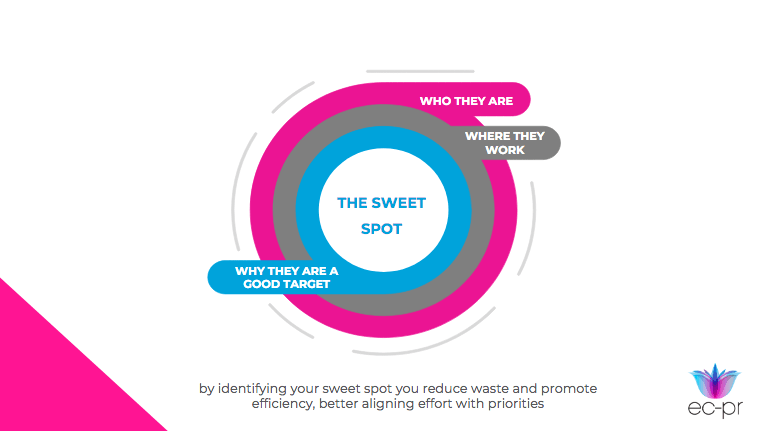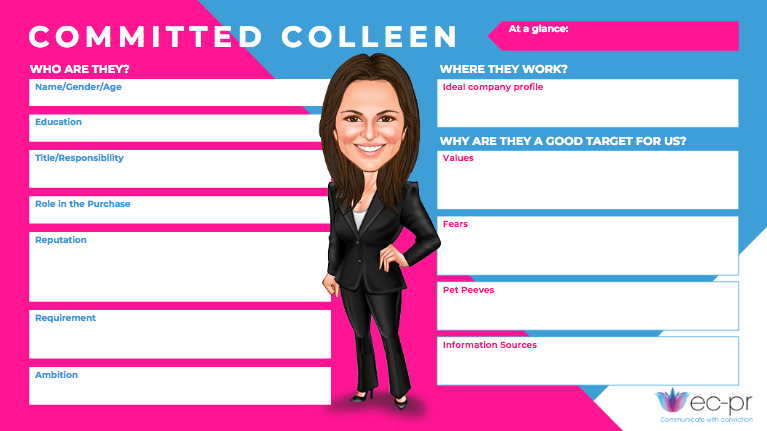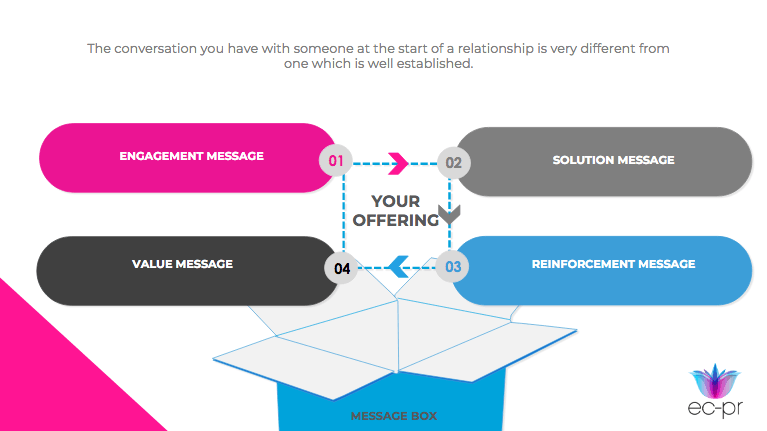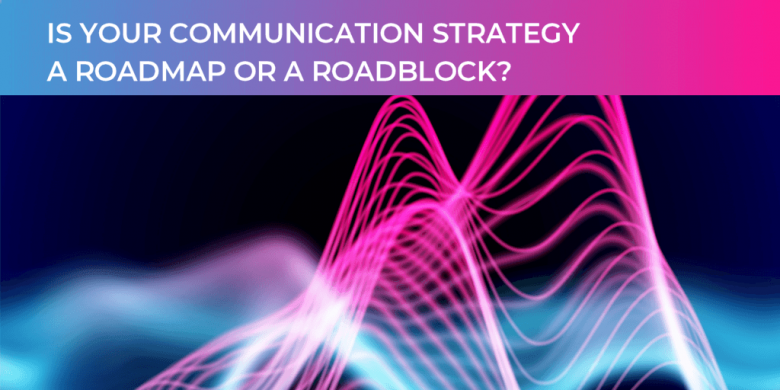
Is your communication strategy a roadmap or roadblock?
If you feel you’re working harder than your business performance reflects, that your resources are stretched and that the returns don’t seem to reflect your investment as well as you’d expected, then a communication strategy may just give you the marginal gain you need.
A communication strategy means different things to different people. So, for the sake of clarity, what I’m talking about is a road map which shows you how to identify and then persuade your ideal client to purchase your product or service, within the context of your commercial objectives.
It enables you to consciously shepherd your prospects from the bottom of the pyramid where they are in a state of absolute ignorance (of your brand) to brand advocate – in other words, at the top of the pyramid. Your communication strategy provides context for you to select appropriate tools and activities to ease your prospects through each phase.
Never forget that it is people, not companies or job titles, who make decisions about you. It is how you relate to people that will determine whether you succeed or fail, and it is for this reason that we put people at the heart of your communication strategy.
Low hanging fruit
Firstly, your communication strategy should scope out amongst whom you are most likely to achieve the results your business is targeted with. This will provide you with focus. An iterative process best achieved by brainstorming to identify who they are, where they work and why they are a good target for your product or service. By engaging a cross-functional team, you can ensure that you don’t miss any important opportunities.
It is worth bearing in mind that by working as a senior cross-functional team, you also give the project gravitas and authority. This is not a job for the interns, if you are serious about changing to a higher gear.
Where the ‘who, where and why’ cross over, you have your sweet spot, your focus for your comms strategy. If you feel that you have two or three possible sweet spots you have to a) prioritise them and b) decide whether you have the resources to pursue all of them proactively and effectively.
Persona(s)
A persona is a representation of your ideal customer(s) and they can be a lot of fun to develop. You should have no more than three of four – more will be unmanageable and probably means you haven’t done the first part of the process properly. The persona is where you capture all the key attributes of your target decision maker(s) – making them feel like a real person even though they’re not. You will collaborate internally to identify these attributes in enough detail for you to feel you know them – from what university they went to, to the media they read, their aspirations, motivations, fears and irritations – everything that makes them who they are in the work environment. Because, if you understand them, you will be able to better craft communications that interests and engages them.
See our Case Study featuring Lloyds Maritime Academy showing how a Communication Strategy can give clarity and structure to marketing efforts, enabling the marketing team to target different audiences at different stages of the buying cycle.
The value proposition
Once upon a time someone set up your business because they thought it was a good idea, they thought it filled a niche, that someone would pay good money for it – they had a pretty good idea of the value proposition. The comms strategy needs this value proposition to be clearly articulated. It should be robust and should have been interrogated to breaking point and then put back together.
Positioning statement(s)
A positioning statement is essentially a rationale for investing in this specific ‘thing’, whether it be a product or service offering. Identify the need and niche it is fulfilling and why it is better than alternatives currently available. Everything you develop should be interrogated in this way – from a business perspective if it delivers no specific distinguishable benefit– why invest in it? If you can see no rationale for it, how on earth will a prospective customer?
Read our brand awareness case study showing how we helped tech business Predatar find “absolute clarity around our value proposition and our messaging throughout the different stages of the buying cycle“.
Messaging
Imagine: I’ve never met you before and you’ve never heard of my company and you receive an email from me which is entitled: ‘Fligflamm – delivers immediate cost savings’. How likely are you to read it? Be honest. Your to-do list is off the page and you have 200 emails in your inbox. You’re not going to read it.
Messaging is about saying the right thing at the right stage of the buying cycle. It informs you when to talk about issues, when to mention brand, when to focus on features/benefits and when to showcase your success stories. I’m a big fan of Mike Gospe (author of The Marketing High Ground) and we use his Message Box model, see below, to draw out the correct messages for each stage of the buying cycle. (In fact, we reference him a lot – do buy his books, they’re brilliant!)
READ MORE: Why your business needs a communication strategy
When you have clarity about what you should be saying to whom and when – it makes choosing your campaign tools a lot more intuitive.
Validation
The final stage of developing your communication strategy is the validation. Engage with existing customers to make sure your assumptions and understandings resonate with them. You’ll be surprised what you learn – it never ceases to amaze me what little nuggets of information and insight emerges.
And then you’re ready to plan your marketing investments, including B2B PR, with greater precision and purpose.
Join our #B2BPR tribe:
If you’ve found this article valuable, you can get more useful insight here:
Download our essential guide: Your 8-Step Communication Strategy
Watch our Insight 2020 videos and discover marketers’ top challenges and strategies
Read how to get the most out of your PR agency: Your 9-point plan for writing the perfect PR brief
Sign up here to receive regular insights on how to make your PR work harder.
At ec-pr we are passionate about b2b communication. We believe your work is amazing and we want to help you tell the world how extraordinary it is.
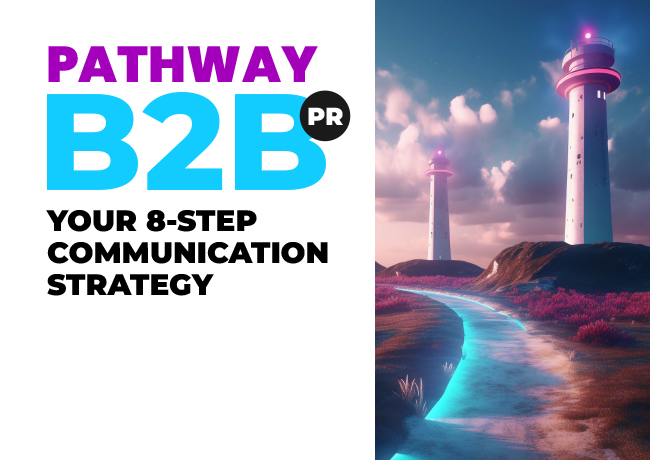
Your 8-Step Communication Strategy Guide
A comprehensive guide to delivering your business goals using intelligent and relevant messaging.
Subscribe to our updates
Stay up to date with the latest insights, case studies and PR guides.
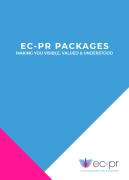
How much does PR cost?
Our transparent guide to B2B PR pricing for tech brands.

